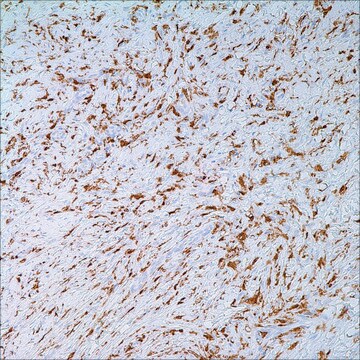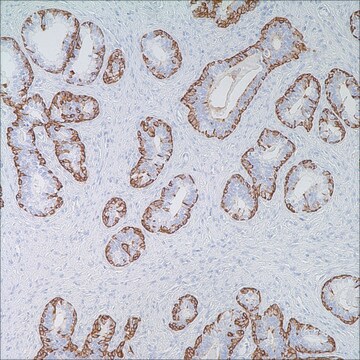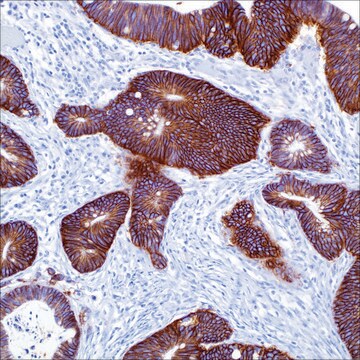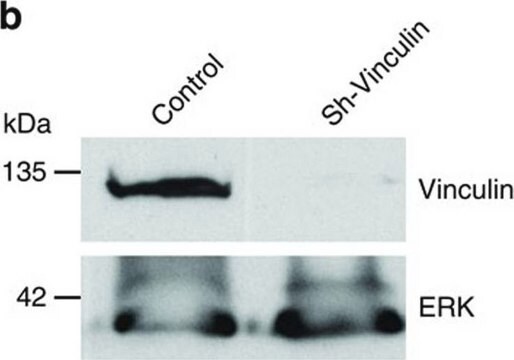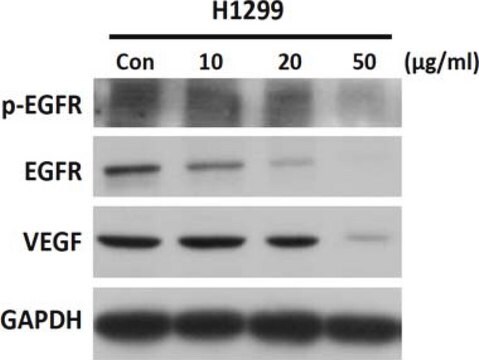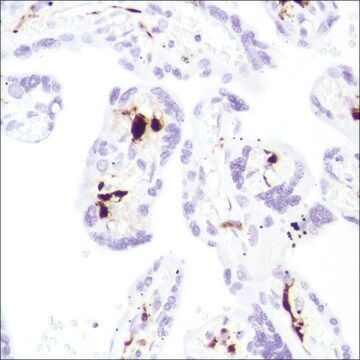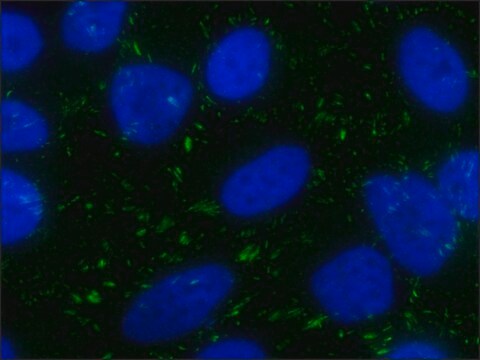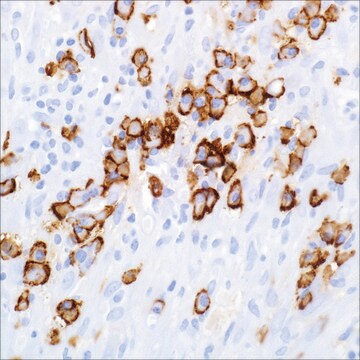251M-1
Factor XIIIa (AC-1A1) Mouse Monoclonal Antibody
About This Item
Productos recomendados
origen biológico
mouse
Nivel de calidad
100
500
conjugado
unconjugated
forma del anticuerpo
diluted ascites fluid
tipo de anticuerpo
primary antibodies
clon
AC-1A1, monoclonal
descripción
For In Vitro Diagnostic Use in Select Regions (See Chart)
Formulario
buffered aqueous solution
reactividad de especies
human
envase
vial of 0.1 mL concentrate (251M-14)
vial of 0.5 mL concentrate (251M-15)
bottle of 1.0 mL predilute (251M-17)
vial of 1.0 mL concentrate (251M-16)
bottle of 7.0 mL predilute (251M-18)
fabricante / nombre comercial
Cell Marque™
técnicas
immunohistochemistry (formalin-fixed, paraffin-embedded sections): 1:100-1:500
isotipo
IgG1κ
control
dermatofibroma
Condiciones de envío
wet ice
temp. de almacenamiento
2-8°C
visualización
cytoplasmic
Información sobre el gen
human ... F13A1(2162)
Categorías relacionadas
Descripción general
Factor XIIIa is a blood proenzyme that has been identified in platelets, megakaryocyte, and fibroblast-like mesenchymal or histiocytic cells present in the placenta, uterus, and prostate; it is also present in monocytes and macrophages and dermal dendritic cells. Anti- Factor XIIIa has been found to be useful in differentiating between dermatofibroma (90% (+)), dermatofibrosarcoma protuberans (25%(+)), and desmoplastic malignant melanoma (0%(+)). Factor XIIIa positivity is also seen in capillary hemagioblastoma (100%(+)), hemangioendothelioma (100%(+)), hemangiopericytoma (100%(+)), xanthogranuloma (100%(+)), xanthoma (100(+)), hepatocellular carcinoma (93%(+)), glomus tumor (80%(+)), and meningioma (80 % (+)).
Ligadura / enlace
Forma física
Nota de preparación
Otras notas
Información legal
¿No encuentra el producto adecuado?
Pruebe nuestro Herramienta de selección de productos.
Código de clase de almacenamiento
12 - Non Combustible Liquids
Clase de riesgo para el agua (WGK)
WGK 2
Punto de inflamabilidad (°F)
Not applicable
Punto de inflamabilidad (°C)
Not applicable
Elija entre una de las versiones más recientes:
Certificados de análisis (COA)
¿No ve la versión correcta?
Si necesita una versión concreta, puede buscar un certificado específico por el número de lote.
¿Ya tiene este producto?
Encuentre la documentación para los productos que ha comprado recientemente en la Biblioteca de documentos.
Artículos
Immunohistochemistry (IHC) techniques and applications have greatly improved, dermatopathology is still largely based on H&E stained slides.This paper outlines ways in which IHC antibodies can be utilized for dermatopathology.
Nuestro equipo de científicos tiene experiencia en todas las áreas de investigación: Ciencias de la vida, Ciencia de los materiales, Síntesis química, Cromatografía, Analítica y muchas otras.
Póngase en contacto con el Servicio técnico